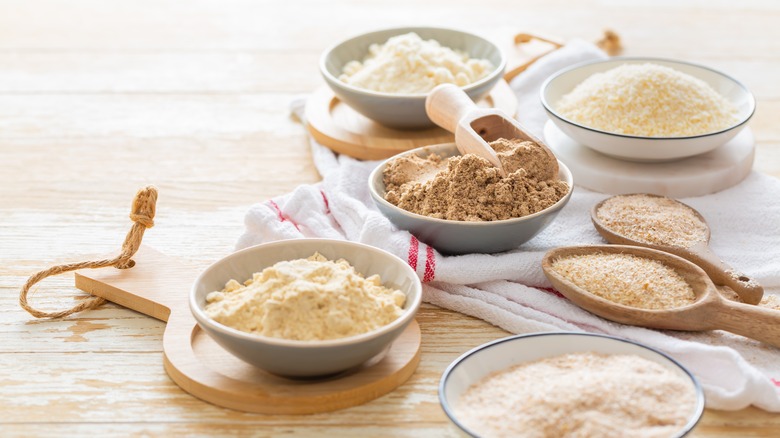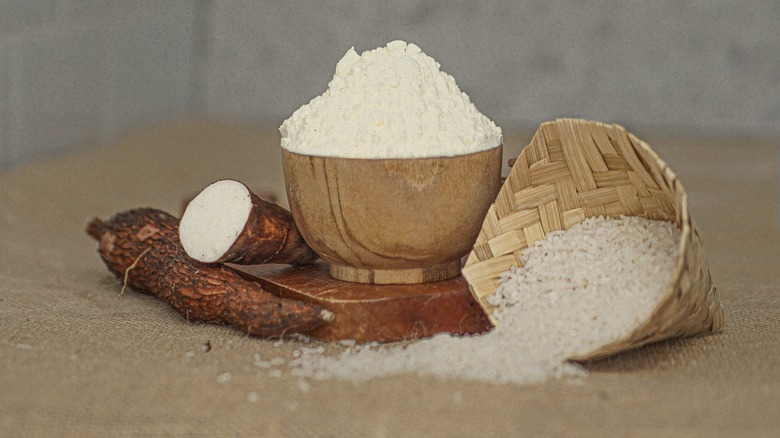Can You Substitute All Purpose Flour And What's The Best Way To Do So?
Whether you're simply out of all-purpose flour or want to use a gluten-free option, making flour substitutions when baking can be tricky. So much of baking is rooted in how ingredients interact with each other, and changing just one can have costly effects. When it comes to subbing out all-purpose flour, the key is using an alternative that will provide similar protein structure in the bake. For expert advice on the best ways to substitute all-purpose flour, Food Republic talked with Jerrelle Guy, author of the James Beard Award–nominated cookbook "Black Girl Baking" and creator of "The Dinner Ritual", an online publication and newsletter traversing the intersection of cooking and spirituality.
All-purpose flour "has a specific protein content that provides gluten, a.k.a. the structure and elasticity to baked goods" says Guy. "Substituting alternative flours — especially gluten-free ones ... — will often lead to different results and texture." For the closest results to all-purpose flour that contain gluten, your best bets (according to Guy) are whole wheat flour, white whole wheat flour, and spelt. "White whole wheat flour is probably the easiest one to one swap" she says, as it offers a "similar protein content and a mild, nutty flavor." When comparing the gluten content, the whole wheat varieties contain around 14% gluten — roughly 2% more than all-purpose.
The best gluten-free substitutes for all-purpose flour
For those who are gluten-free, it can be challenging and expensive to source and substitute gluten-free ingredients for baked goods. If your motive for substituting all-purpose flour stems from a gluten sensitivity, opt for spelt. Aside from how spelt differs from all-purpose flour in taste, it also contains less gluten — so much so that those with minor sensitivities may not experience a reaction.
A great swap for those with wheat allergies or celiac disease would be to use gluten-free flours that are labeled as a one to one blend, says Jerrelle Guy. Often, popular gluten-free flours make use of potato starches and xanthan gum for fluffy consistencies in gluten-free bakes because they mimic the effects of gluten. Guy mentions that other gluten-free options, such as almond flour and coconut flour, are better suited for "quick breads, cookies, and pancakes." If you're planning on using a gluten-free flour, make sure to use two to three extra tablespoons of liquid for the best results, as gluten-free options tend to absorb more liquids than all-purpose flour.


